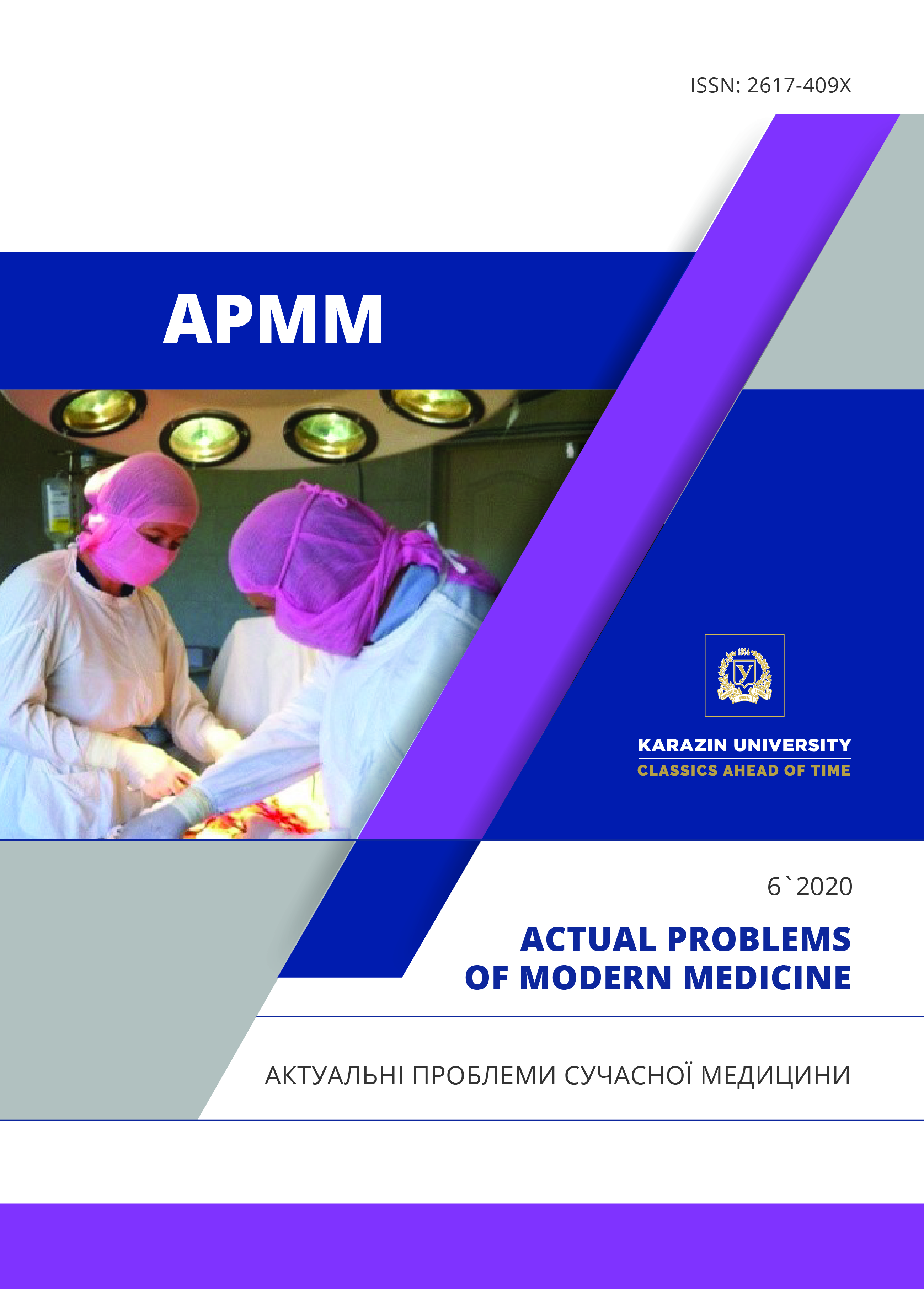Clinical features of reactive arthritis in children
Abstract
Summary. Reactive arthritis includes inflammatory non-purulent diseases of the joints that develop within 2-4 weeks after intestinal or urogenital infection due to immune disorders. Given the nonspecificity of the clinical manifestations of reactive arthritis, its similarity to other rheumatic diseases, which have a more unfavorable course and prognosis, it must be recognized that the problem of reactive arthritis in children remains relevant and on many issues not developed. Objective: this is to identify the characteristics of the debut and currents of reactive arthritis in accordance to etiology in children today. Materials and methods: There were observed 81 children with a reactive arthritis in the age of from 2 till 17 years have been examined. During specification the nosology of articular pathology were used clinical, laboratory and instrumental investigations, identified specific antibodies to Chlamydia, Mycoplasma, Iersiniya, Ureaplazma, Citomegalovirus, Herpes simplex virus, Epstein-Bar’s virus by ELISA. Results: For reactive arthritis chlamydial etiology characterized by loss of large and medium-sized joints of the lower limbs, which often is accompanied by a brief morning stiffness and rapid emergence of transient regional hypotrophy of muscles. Feature ureaplazmial reactive arthritis is the formation of bursitis in the heel and tendinitis. Reactive arthritis, which is accompanied by elevated titers to ASL-O, had different polymorphisms of articular manifestations of the syndrome and to a certain degree of similarity with juvenile rheumatoid arthritis. Reactive arthritis of not specified etiology has a number of the general features with others reactive arthritis and it is characterized by rather good-quality current, long conservation of function of joints and low laboratory activity. Conclusions: The clinical manifestation of the disease and the nature of its course to some extent depend on the etiological pathogen of arthritis. The most unfavorable variants of reactive arthritis are arthritides caused by Chlamydia and Mycoplasma. Regardless of the pathogen, the infectious factor can be assessed as a trigger for the development of juvenile rheumatoid arthritis. The presence of recurrent reactive arthritis is the basis for re-differential diagnosis and reclassification of reactive arthritis in favor of juvenile rheumatoid arthritis, despite the low degree of inflammatory activity of the disease and ANA and HLAB27 negativity.
Downloads
References
Boyko YaE. Differential diagnosis of arthritis in children. Modern Pediatrics.Ukraine. 2019.5(101): 112-122. https://doi.org/10.15574/SP.2019.101.112 [in Ukrainian].
Ajene AN, Fischer Walker CL, Black RE. Enteric pathogens and reactive arthritis: a systematic review of Campylobacter, salmonella and Shigella-associated reactive arthritis. J Health Popul Nutr. 2013;31(3):299-307. https://doi.org/10.3329/jhpn.v31i3.16515.
Carter JD, Hudson AP. Recent advances and future directions in understanding and treating Chlamydia-induced reactive arthritis. Expert Rev Clin Immunol. 2016 Sep 20. P. 1-10. [ISSN: 1744-8409].
Chu K-A, Chen W, Hsu CY, Hung Y-M, Wei JC-C (2019) Increased risk of rheumatoid arthritis among patients with Mycoplasma pneumonia: A nationwide population-based cohort study in Taiwan. PLoS ONE 14(1): e0210750. https://doi.org/10.1371/journal.pone.0210750.
Garcia-Kutzbach A, Chacon-Suchite J, Garcia-Ferrer H, Iraheta I. Reactive arthritis: update 2018. Clin Rheumatol. 2018 Apr. Vol. 37 (4). P. 869-874. https://doi.org/10.1007/s10067-018-4022-5.
Hayes KM, Hayes RJP, Turk MA, Pope JE. Evolving patterns of reactive arthritis. Clin Rheumatol. 2019 Aug;38(8):2083-2088. doi: 10.1007/s10067-019-04522-4. Epub 2019 Mar 27. PMID: 30919146.
Janice John, Latha Chandran. Arthritis in Children and Adolescents. Pediatrics in Review. 2011; 32 (11) 470-480; https://doi.org/10.1542/pir.32-11-470.
Lahu A, Bajraktari IH, Lahu S, et al. The source of infection and the most frequent causes of reactive arthritis in Kosovo. Mater Sociomed. 2016;28(3):201-204. https://doi.org/10.5455/msm.2016.28.201-204.
Megha Sharma, Susmita Sharma, Aman Sharma, Kusum Sharma. (2020). Chlamydia Trachomatis Associated Reactive Arthritis: A Urinary PCR Based Study. Indian Dermatol Online J. 2020 Jan-Feb; 11(1): 21–24. https://doi.org/10.4103/idoj.IDOJ_410_19.
Petty RE, Laxer RM, Lindsley CB, Wedderburn LR. (2015). Textbook of pediatric rheumatology, 7th edn. Philadelphia: Saunders: 739.
Plesca DA, Luminos M, Spatariu L, Stefanescu M, Cinteza E, Balgradean M. Postinfectious arthritis in pediatric practice. Maedica (Bucur). 2013;8(2):164-169. PMID: 24371480.
Schmitt SK. Reactive Arthritis. Infect Dis Clin North Am. 2017. Vol. 31, Issu 2. P. 265-277. https://doi.org/10.1016/j.idc.2017.01.002.
Selmi C, Gershwin ME. Diagnosis and classification of reactive arthritis. Autoimmun Rev. 2014 Apr-May. Vol. 13 (4-5). P. 546-9. https://doi.org/10.1016/j.autrev.2014.01.005.
Zeidler, H., Hudson, A.P. Chlamydia-Induced Reactive Arthritis: Disappearing Entity or Lack of Research?. Curr Rheumatol Rep 21, 63 (2019). https://doi.org/10.1007/s11926-019-0863-4




